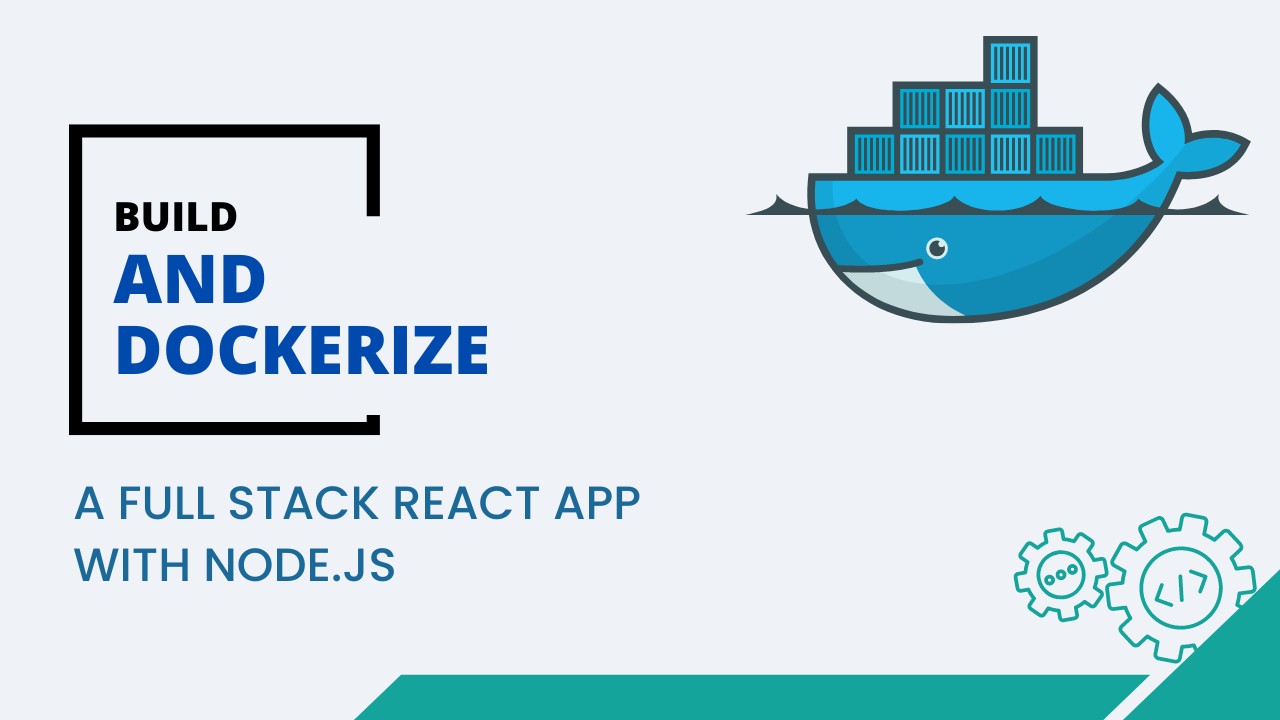In today’s rapidly evolving software development landscape, containerization has become a crucial aspect of building and deploying applications. Docker, a popular containerization platform, allows developers to package their applications and their dependencies into lightweight, portable containers. In this article, we will explore how to build and Dockerize a full stack React application with Node.js, enabling you to create scalable and efficient web applications.
1. Setting up the Development Environment
Before we begin building our full stack React app, we need to set up our development environment. This involves installing Node.js, npm (Node Package Manager), and Docker on your machine. By having these tools installed, we can efficiently develop and deploy our application. (LSI: Node.js, npm, Docker, development environment)
2. Creating a Full Stack React App
To build a full stack React app, we need to create both the frontend and backend components. Let’s start by initializing a React app and then proceed to build the backend using Node.js. (LSI: full stack React app, frontend, backend, initializing, React app, Node.js)
2.1. Initializing a React App
Using the create-react-app command, we can quickly scaffold a new React application. This command sets up the necessary files and dependencies required for a React project. We’ll also explore some key React concepts and set up the basic structure of our frontend. (LSI: create-react-app, React application, dependencies, scaffold, frontend, React project)
2.2. Building the Backend with Node.js
In order to connect our frontend with a backend, we need to build the server-side using Node.js. We’ll create an Express.js server, define routes, and implement the necessary logic for our API endpoints. This will provide the required functionality for our full stack application. (LSI: backend, Node.js, Express.js server, routes, API endpoints, full stack application)
3. Connecting the Frontend and Backend
With our frontend and backend components in place, it’s time to establish the connection between them. We’ll configure API routes on the frontend to communicate with the backend server, enabling data transfer and interaction between the two. (LSI: frontend, backend, API routes, communication, data transfer, interaction)
3.1. Establishing API Routes
Using Axios, a popular HTTP client library, we’ll set up API routes on our frontend to send requests to the backend server. These routes will allow us to perform CRUD operations and retrieve data from our server. (LSI: Axios, HTTP client library, API routes, requests, CRUD operations, data retrieval)
3.2. Testing the Connection
To ensure that the frontend and backend are connected and functioning correctly, we’ll test the API routes and verify that data is being transmitted accurately between the two components. This step is crucial for debugging and validating the connection. (LSI: testing, API routes, frontend-backend connection, data transmission, debugging, validation)
4. Dockerizing the Application
Now that our full stack React app is working locally, we’ll containerize it using Docker. This will enable us to package the application, its dependencies, and the runtime environment into portable containers that can be deployed across different environments. (LSI: Dockerizing, containerize, portable containers, dependencies, runtime environment, deployment)
4.1. Writing Dockerfiles
A Dockerfile is a text document that contains instructions for building a Docker image. We’ll create Dockerfiles for both the frontend and backend components, specifying the required dependencies and configuring the container environment. (LSI: Dockerfile, Docker image, frontend, backend, dependencies, container environment)
4.2. Building Docker Images
Using the Docker CLI, we’ll build Docker images based on our Dockerfiles. These images will serve as the blueprints for our application containers. We’ll explore the necessary commands and best practices for building optimized and efficient Docker images. (LSI: Docker CLI, Docker images, Dockerfiles, application containers, commands, best practices, optimization, efficiency)
4.3. Running Containers
With our Docker images ready, we can run containers from them. We’ll learn how to start Docker containers, map ports, and establish the connection between the frontend and backend containers. This will allow us to test our Dockerized application locally. (LSI: running containers, Docker images, Dockerized application, ports, frontend-backend connection, testing)
5. Deploying the Dockerized App
Once we have successfully tested our Dockerized application locally, we can move on to deploying it to a production environment. We’ll explore setting up a Docker registry to store our Docker images and deploy our app using a cloud platform. (LSI: deploying, Dockerized application, production environment, Docker registry, Docker images, cloud platform)
5.1. Setting Up a Docker Registry
A Docker registry is a central repository for storing and distributing Docker images. We’ll set up a Docker registry to store our application’s Docker images, ensuring a reliable and accessible source for our deployments. (LSI: Docker registry, repository, Docker images, deployments, reliability, accessibility)
5.2. Deploying to a Cloud Platform
Using a cloud platform, such as AWS or Google Cloud, we’ll deploy our Dockerized application. We’ll walk through the necessary steps, including creating cloud resources, configuring services, and launching our containers on the cloud platform. (LSI: cloud platform, AWS, Google Cloud, deployment, Dockerized application, cloud resources, services, containers)
Need help on maintaining Azure Security Center Secure Score of Clients?
Our experts can help you on all kinds of works on Azure Security Center.
Conclusion
In this comprehensive guide, we have learned how to build and Dockerize a full stack React application with Node.js. We explored setting up the development environment, creating the frontend and backend components, connecting them, and deploying the Dockerized app using a cloud platform. By following these steps, you’ll have a solid foundation for building and containerizing your own full stack web applications. (LSI: comprehensive guide, full stack React application, Node.js, development environment, frontend, backend, connection, Dockerized app, cloud platform)
By following this step-by-step guide, you’ll be well-equipped to build and Dockerize your own full stack React app with Node.js. Containerization not only simplifies deployment but also enhances scalability and efficiency, making it an essential skill for modern web developers. Start building and containerizing your applications today!








